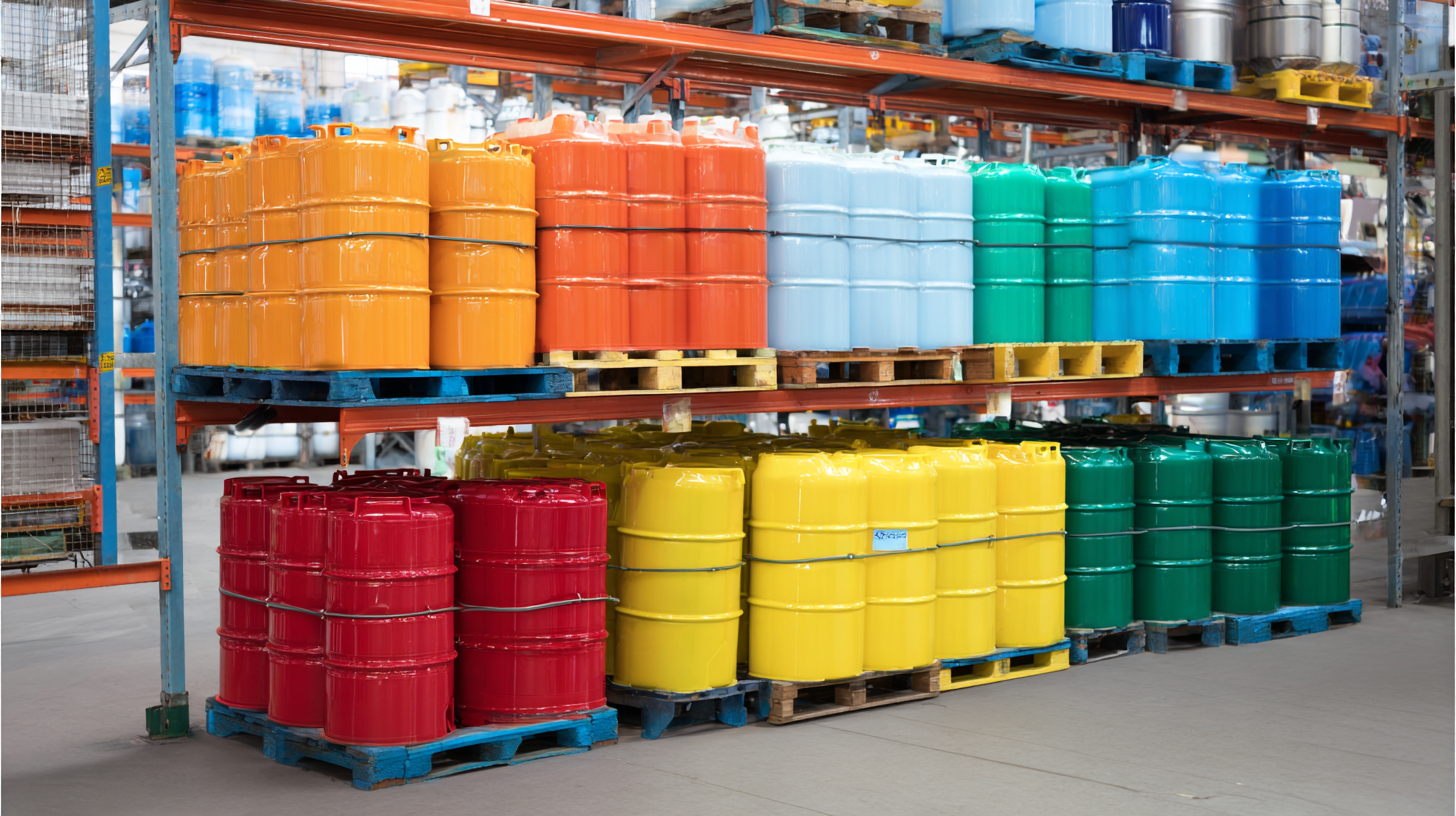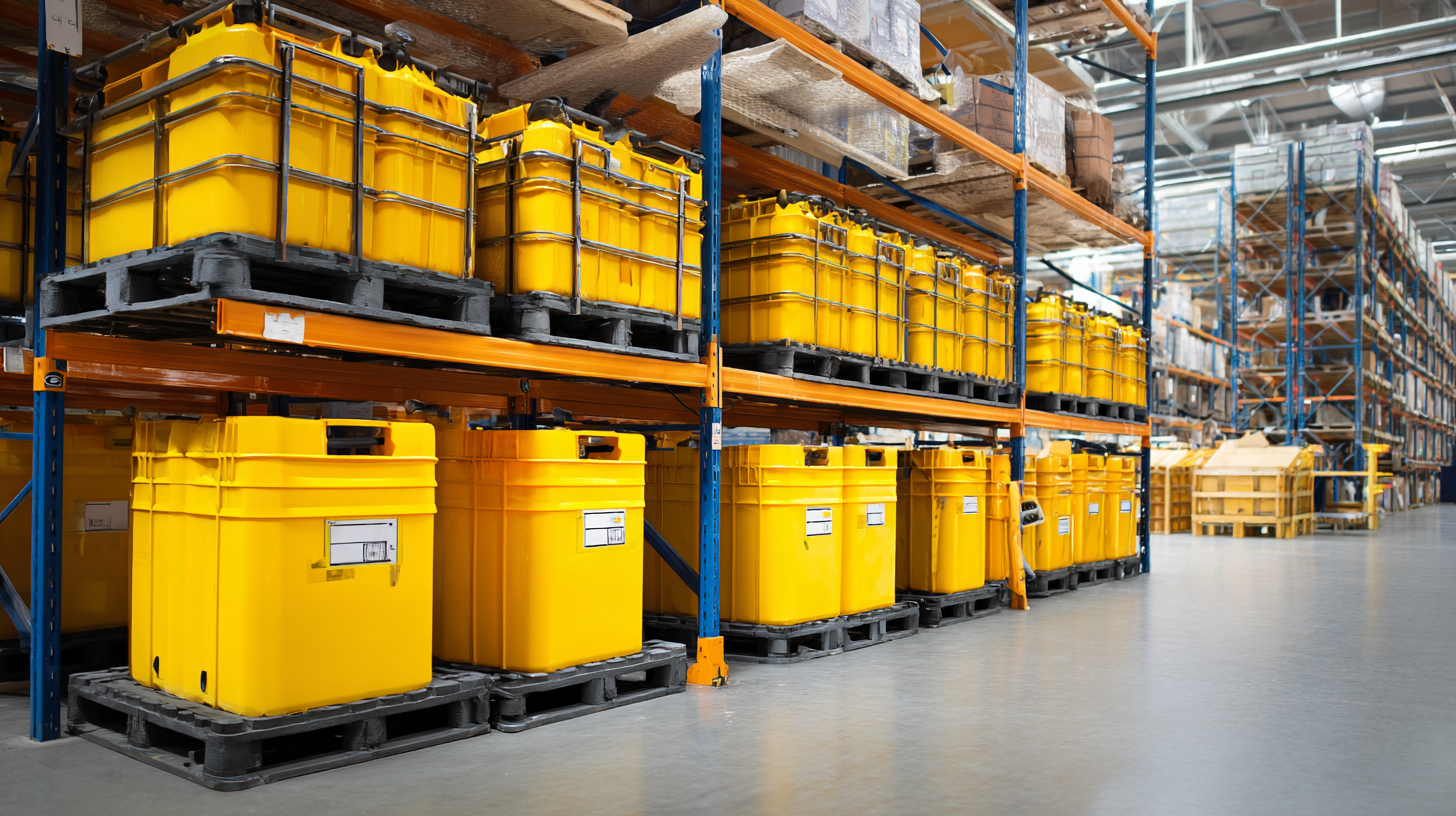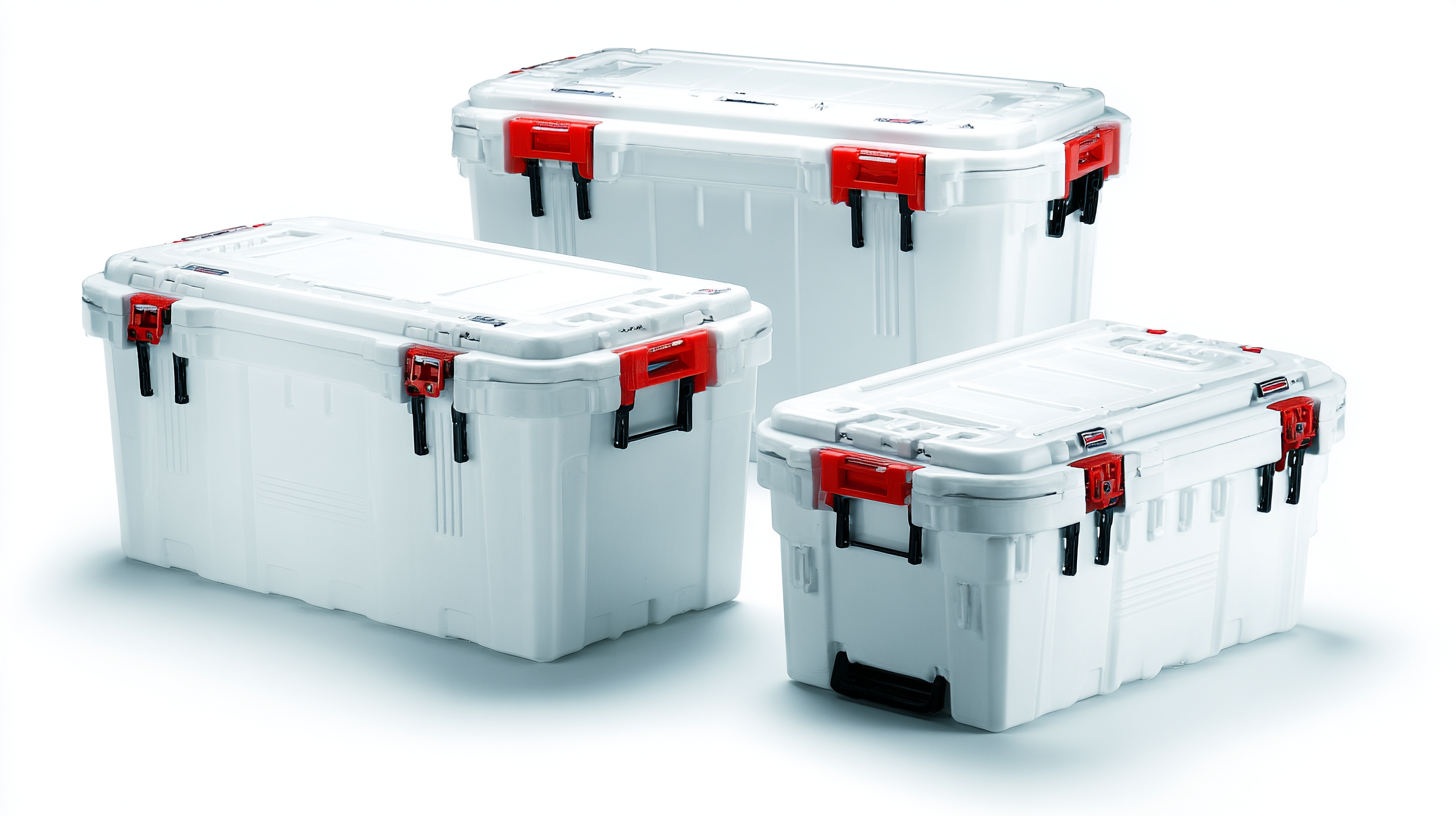
Blog
Ultimate Guide to Specifications of the Best Plastic Bulk Containers for Global Buyers
In the ever-evolving landscape of global trade and logistics, the significance of efficient packaging solutions cannot be overstated. Plastic bulk containers have emerged as a pivotal element in this sector, offering durability, recyclability, and cost-effectiveness to businesses worldwide. According to a recent report by Market Research Future, the global plastic bulk containers market is projected to reach USD 12 billion by 2025, growing at a CAGR of 4.5%. This growth is fueled by the increasing demand for safe and efficient storage and transportation of various goods, from food products to industrial supplies. As global buyers seek optimal solutions to enhance their supply chain efficiency, understanding the specifications and types of these containers becomes essential. This guide will delve into the various options available in the market, helping businesses make informed decisions that align with their operational needs.

Understanding the Importance of Quality Specifications in Plastic Bulk Containers
When it comes to selecting plastic bulk containers, understanding the importance of quality specifications cannot be overstated. As global buyers seek reliable solutions, the specifications of these containers directly impact how well they can meet customer needs. Quality specifications ensure durability, safety, and efficiency, ultimately contributing to a more streamlined supply chain. Buyers must prioritize containers that not only comply with industry standards but also align with their unique operational requirements.
Tips for selecting the best plastic bulk containers include evaluating the material type—opt for high-density polyethylene (HDPE) or polypropylene (PP) for enhanced strength and resistance to chemicals. Additionally, consider the container's capacity and dimensions to ensure it fits your logistical needs perfectly. Lastly, always request test certifications or compliance documents to verify that the containers meet safety and quality standards. By focusing on these specifications, buyers can make informed choices that reflect the true value of their purchases and satisfy their customers' expectations.
Key Features to Look for in High-Performance Plastic Bulk Containers
When considering plastic bulk containers for global trade, it’s essential to focus on key features that define their performance and suitability for diverse applications. One critical aspect is the material quality; high-density polyethylene (HDPE) and polypropylene are sought after for their durability and resistance to various chemicals. According to a report by Grand View Research, the global plastic containers market was valued at USD 29.4 billion in 2021 and is expected to expand at a compound annual growth rate (CAGR) of 5.7% through 2028, underscoring the increasing reliance on these containers for logistics and storage solutions.
Another vital feature to examine is the container’s design and stacking capability. Optimal design not only enhances space efficiency during storage and transport but also ensures safety during handling. Data from the Packaging Association indicates that well-designed bulk containers can reduce freight costs by up to 15% due to improved space utilization. Additionally, look for containers with UV protection for longevity, as exposure to sunlight can degrade materials over time, affecting the integrity of both the container and its contents. These characteristics collectively contribute to operational efficiency and cost-effectiveness in the supply chain, making them indispensable for global buyers.

Comparative Analysis of Popular Plastic Bulk Container Designs
When it comes to selecting the right plastic bulk containers, understanding the various designs available on the market is essential for global buyers. Common designs include the traditional stackable containers, which offer efficient storage and transportation solutions by minimizing space usage during both empty and filled states. These containers are often constructed from high-density polyethylene (HDPE), making them durable and resistant to impact and chemicals. Their stackable nature allows for easy handling and organization in warehouses, making them a popular choice for industries ranging from food distribution to pharmaceuticals.
Another notable design is the collapsible bulk container, which provides exceptional versatility. These containers can be folded when not in use, significantly reducing storage space. Their robust construction ensures that they can withstand the rigors of shipping and handling, while their lightweight design aids in lowering transportation costs. However, buyers should consider factors like weight limits and load-bearing capacities to ensure they choose a design that meets their specific needs. By comparing the benefits and limitations of each type, global buyers can make informed decisions that enhance their supply chain efficiency.
Manufacturing Standards: Ensuring Durability and Reliability for Global Markets
In the evolving landscape of global markets, manufacturing standards play a pivotal role in ensuring the durability and reliability of products, particularly in sectors leveraging plastic bulk containers. As consumers and industries alike demand enhanced product performance, it’s crucial to adhere to strict manufacturing guidelines. Reports indicate that the global liquid filtration market, currently valued at approximately $4.593 billion, is projected to grow at a compound annual growth rate (CAGR) of 5.64%, reaching new heights by 2033. This growth underscores the importance of quality standards in maintaining the integrity of liquid management solutions.
Additionally, the market for electronic components, such as automotive switches, is also witnessing robust growth, with projections indicating significant expansions driven by advancements in technology and consumer safety demands. The vehicle component sector expects a notable increase, reflecting a shift towards greater efficiency and performance in automotive systems. Manufacturers must prioritize compliance with international standards to compete effectively and meet the diverse needs of a global clientele, thereby reinforcing their market presence amidst rising competition.

Sourcing Strategies for Cost-Effective Plastic Bulk Containers from China
When sourcing plastic bulk containers from China, implementing effective strategies is essential for global buyers looking to optimize costs and improve supply chain efficiency. According to a recent report by Grand View Research, the global plastic container market is projected to reach $56.5 billion by 2025, with a significant portion attributed to bulk containers. This growth emphasizes the importance of choosing the right suppliers and understanding market dynamics.
One of the most effective sourcing strategies is integrating a thorough supplier assessment process. Buyers should look for manufacturers who comply with international quality standards, such as ISO 9001, and have a proven track record of export success. A report from MarketsandMarkets highlights that over 30% of supply chain costs can be reduced by partnering with suppliers who utilize advanced production technologies, ensuring affordability without compromising quality.
Moreover, leveraging digital platforms can enhance sourcing efficiency. Platforms like Alibaba and Global Sources provide access to a wide range of suppliers, allowing buyers to compare prices and quality quickly. Industry insights show that companies adopting e-sourcing tools report a 40% reduction in procurement time, facilitating faster decision-making and cost savings. By strategically navigating the sourcing landscape, buyers can secure the best plastic bulk containers while maximizing their return on investment.
